New post in the “The Cave Journey” blog by our scientist Cinthya:
Secondment
Climate-control box at the University of Waikato
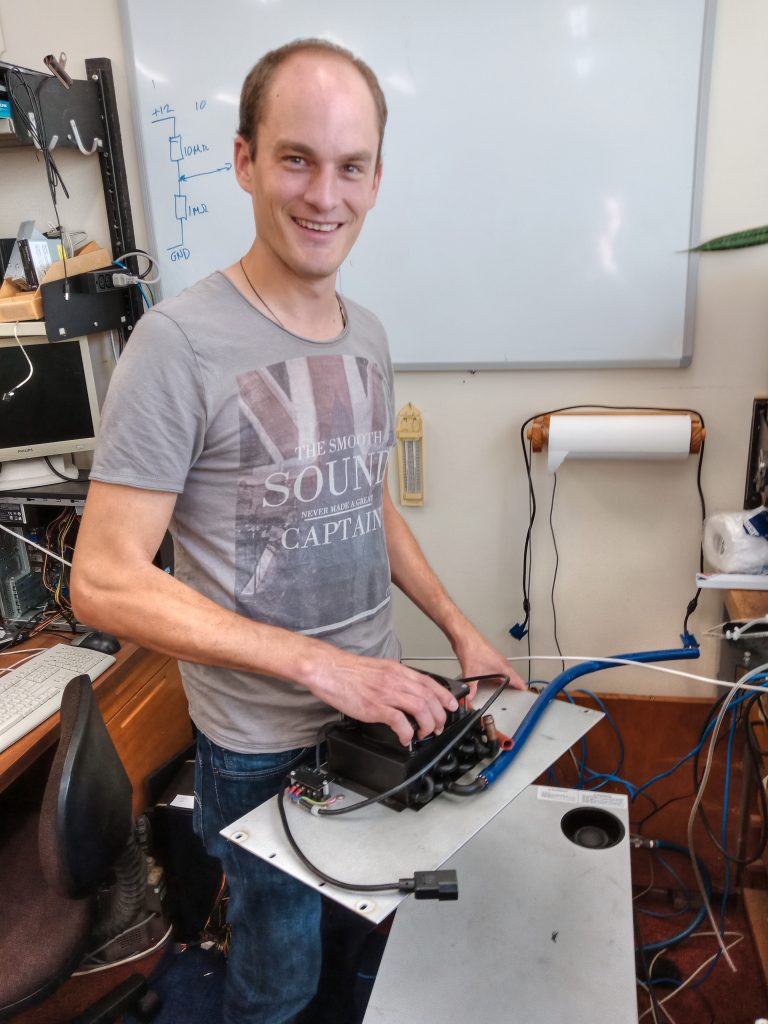
The development of a climate-control box at the University of Waikato (based on the prototype at JGU, Mainz) has made significant progress. This box, christened ‘GeoMIC’ (Geochemistry, Mineralogy, Isotopes and Climate), is a state-of-the-art climate-control box designed to provide QUEST researchers with a chamber of strictly-controlled atmosphere in which a wide range of laboratory experiments in geochemistry, mineralogy and climate science can be run. The box has been designed and constructed primarily by Dr. Adam Hartland and two technicians, in collaboration with Max Hansen (JGU) who spent a month visiting the University of Waikato in mid-2018. Max provided useful insights and advice during the construction of GeoMIC and the design of the first experiments to be run within the box.
GeoMIC will be used primarily for calcite growth experiments, with the atmosphere inside the chamber closely mimicking natural cave conditions. It has been constructed to ensure its suitability for experiments requiring trace element and isotopic analyses. GeoMIC has the potential for stable C and O isotope experiments to be run in the future. GeoMIC has been equipped with a 4-channel high-precision Heidolf peristaltic pump, high sensitivity Vaisala probes for humidity, temperature and CO2, and an entry port for two separate gases. Manual manipulation of an experiment after the chamber has been sealed to the outside environment can be achieved through four nitrile isolator-box gloves installed on the face of the box, designed for increased dexterity.
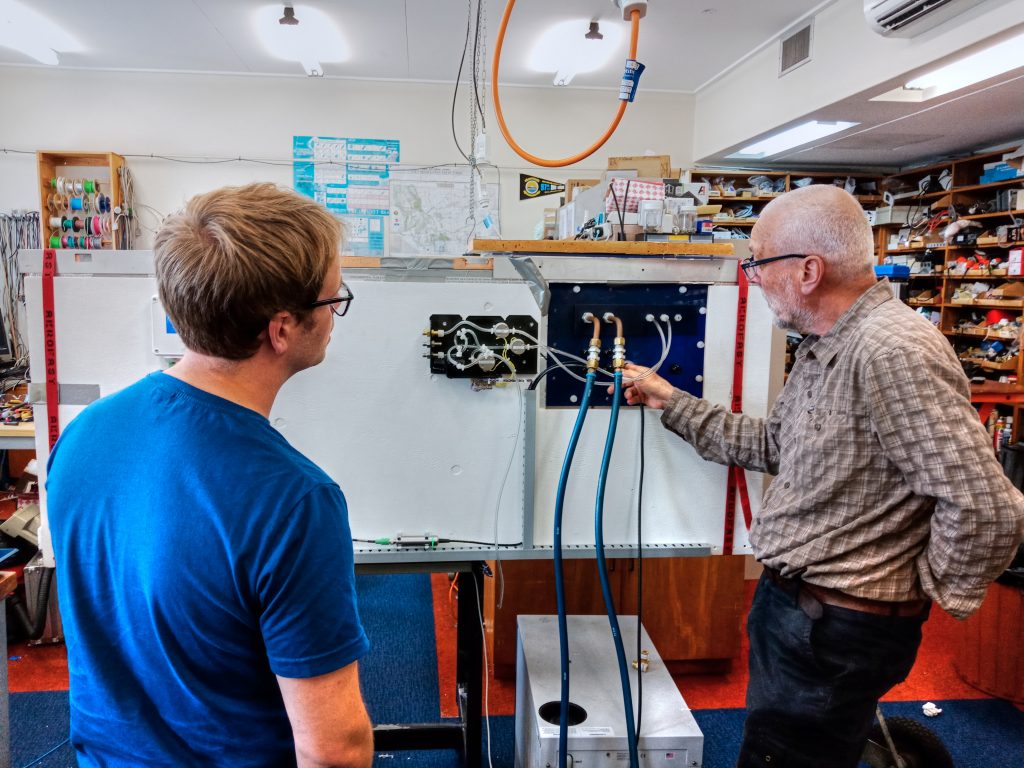
Perhaps the most impressive feature of GeoMIC is the purpose-built Labview software program that provides automatic control of the CO2, humidity and temperature within the chamber. The software ensures these parameters are kept at the user-specified values, as well as logging all atmospheric data for the duration of the experiment. This software also controls the peristaltic pump, so that changes in flow rate throughout an experiment can be achieved without manual intervention. Sequences specifying changes in temperature, humidity, flow rate and CO2 concentrations at set times throughout the experiment can be executed automatically using the software, and remote access to the GeoMIC computer ensures that the box atmosphere and the flow rates can be monitored and adjusted from anywhere in the world. This software represents a major improvement in the climate-control box system, as researchers will be required to spend significantly less time checking on and manually adjusting the environmental parameters. Importantly, the fluctuations in these parameters are also significantly smaller than when controlled manually, therefore a more constant environment is maintained.
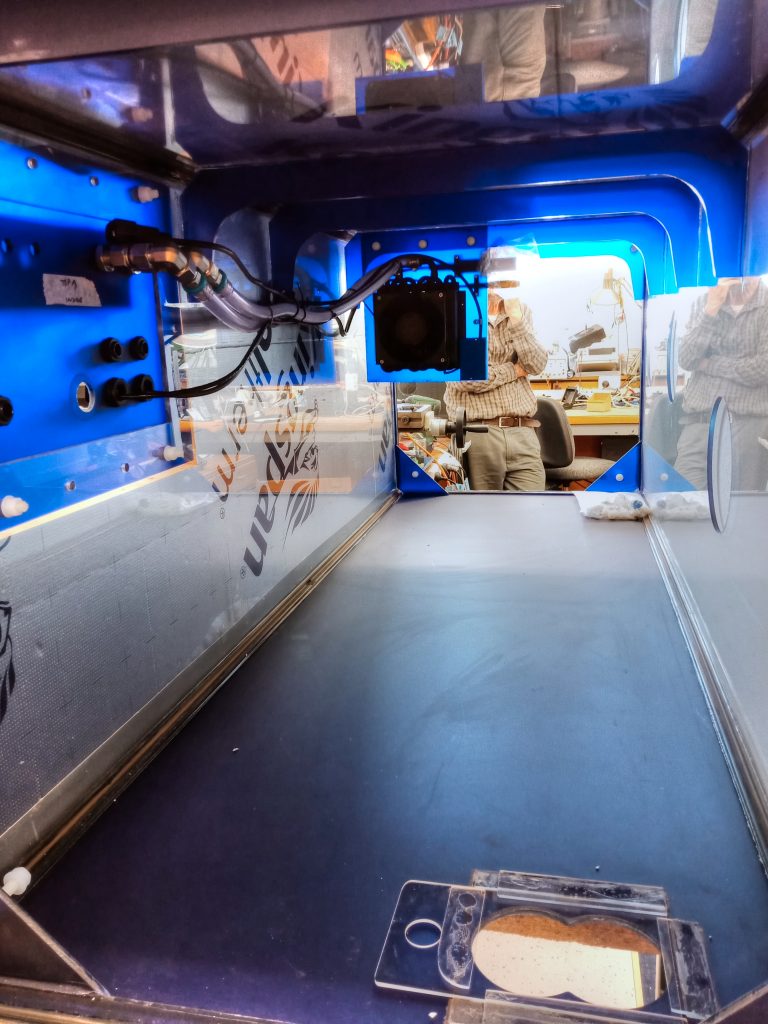
GeoMIC is expected to be fully completed in February 2019, and several calcite growth experiments have already been designed to run upon completion of the system. These experiments allow the growth of calcite in a cave-analogue environment, and will provide valuable information about partitioning and fractionation of trace elements inside speleothems. The effects of the coordination of Cu, Co and Ni to organic ligands in cave dripwater will also be assessed. These experiments will potentially aid in the development of new trace element paleoclimate proxies for speleothem analysis.
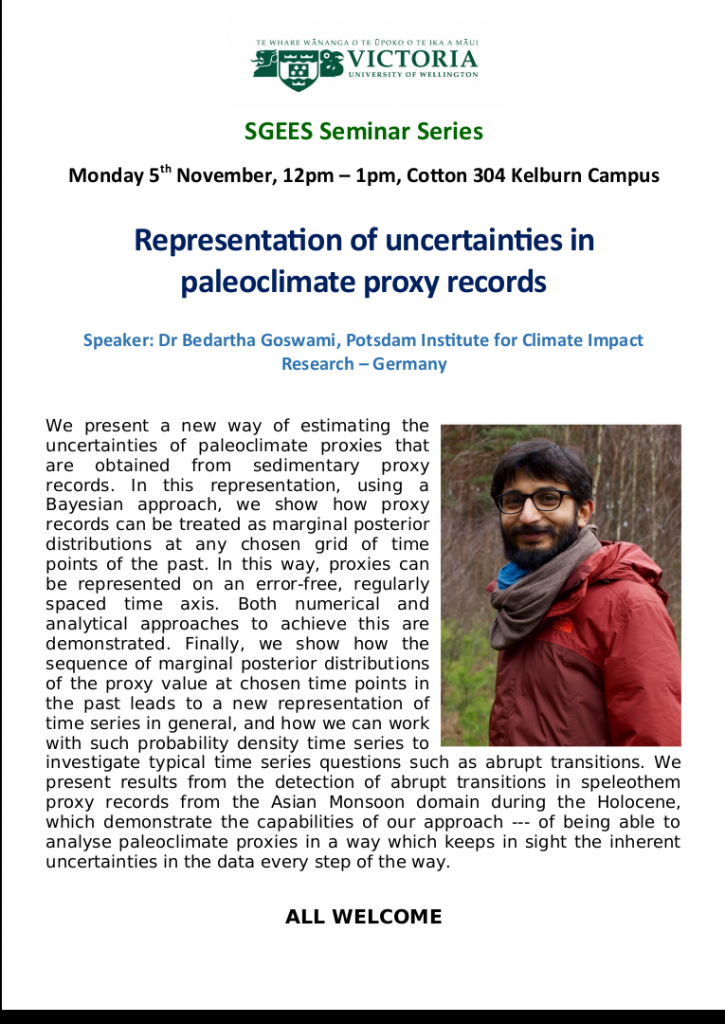
The next QUEST workshop is coming soon at Waikato University: Workshop 2018
Flat whites, drip rates, and tramps
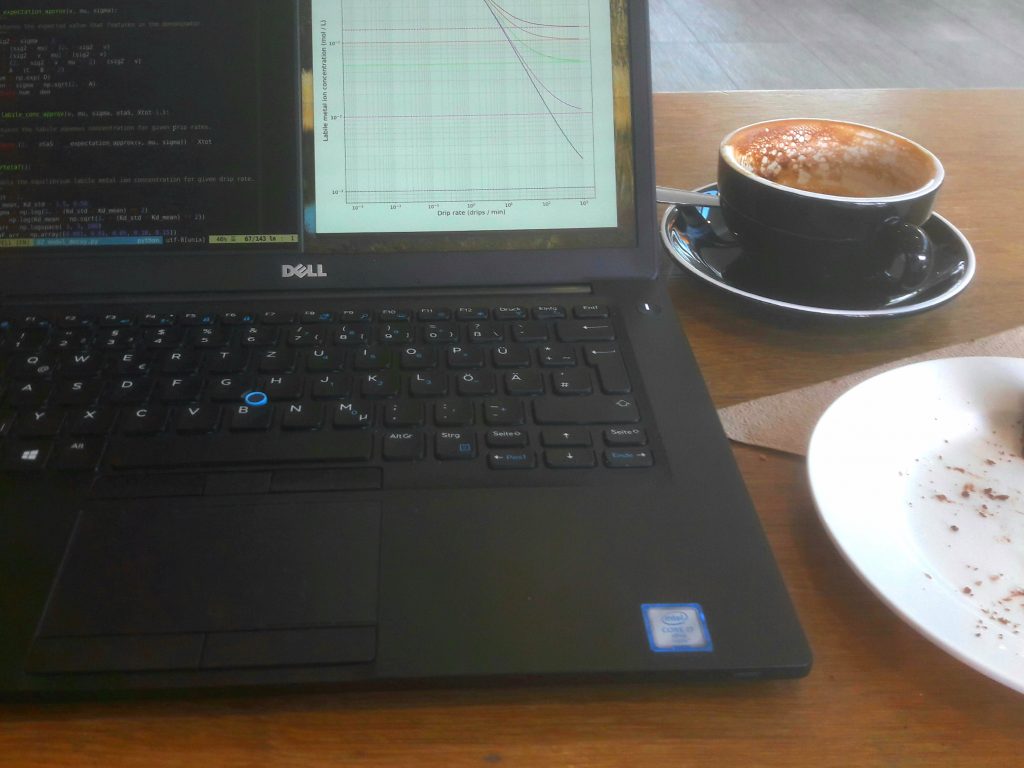
The excellent ‘flat white’ coffee of New Zealand is key for the success of the secondment.
By Bedartha Goswami
I arrived in Hamilton a month or so ago, around noon on 17 September. I met Adam at the University the next day and roughly speaking, a day later, on the 19th, we set out the approximate targets of my secondment: the estimation of the rates of dripping of cave drip water from speleothem measurements. Since then, Adam and I have tackled this problem from several angles. We discuss and then he sends me data sets and then I implement our ideas in code and then we discuss some more and we repeat this cycle. We make progress at times, and at times we get stuck. At all times though, we have managed to have intellectually stimulating conversations.
Adam also took me to the Waipuna cave on 26 September, which was an experience like I have never had before and has undoubtedly taken me a step closer to the topic of my codes. It has made me understand the minutiae of how drip waters form stalagmites better than before. (I will perhaps write my impressions of the Waipuna cave visit in another post). In general, my discussions with Adam have helped me get to know speleothems better, and also the processes involved in quantifying past climates using them.
Now, a few thoughts and impressions outside of work. This is my first trip to New Zealand, and I came here with a mind fairly bereft of preconceived notions. Only a rough idea of it being a paradise to almost everyone who talks about it, irrespective of whether they have actually been here before, or whether they are German or Indian. I have had an unforgettable stay thus far, and have encountered a warm and welcoming people who say “sweet man!” a lot. I’ve learnt to say “cheers ma’yt!” instead of “thanks” and have learnt to take a well made cup of ‘flat white’ coffee for granted. I’ve had Anzac biscuits and Afghan cookies and mince pies and am looking forward to try out Manuka honey some time before I leave.
Tramping around (‘tramping’ = ‘hiking’ in local Kiwi-speak) with local tramping clubs have taken me through intense bush trails in the back country, and offered up a stark contrast to not only the North American-frontier style layout of the towns but also to undulating lush green farmland – the hallmark of the quintessential New Zealand landscape. At one of the viewpoints, I asked the man leading the tramp: “So all these meadows, do you think they were all forests before humans?” “Of course”, came the reply, “Before, it was only bush and bird.”
I’ve learnt to identify some of the native birds (Tui and Kereru) and some of the native trees (cabbage tree, Nikau Palm, Manuka, Kanuka, Rimu, Rewa Rewa). Perhaps before I leave, I will get a chance to see the skeleton of the Moa bird — killed to extinction for food by the Maori. I witnessed discussions on predatory pests being taken care of with ‘1080P’ poison pellets so that the birds don’t go extinct. I see a land precariously holding on to its natural heritage, and passionately fighting for it. I have learnt to admire the efforts understaffed “doc” (Dept of Conservation). To me, this place seems to have successfully held time at bay, slowing down its forward stride so as to enjoy life and nature for a few moments more.
WEG researcher visits the University of Cambridge:
https://wegeochem.com/2018/09/18/project-quest-update-weg-researcher-visits-the-university-of-cambridge/
QUEST research secondment from New Zealand to Cambridge
Between June and August 2018 I visited the Godwin Lab at the University of Cambridge as part of the QUEST project. This was an amazing, stimulating time for me where I learnt a lot and started some exciting work with Thomas Bauska and David Hodell. A new recruit to QUEST, PhD student Brittany Ward, also visited the lab overlapping with my visit and worked closely with Thomas in developing a new, fluid-inclusion isotope method for speleothems. The early results of Brittany’s work already look very promising and I received some very promising data from carbon and oxygen isotope analysis of a stalagmite record. The next step is to incorporate Ca isotopes and trace elements as proxies of local moisture availability.
Adam